Making Kimchi
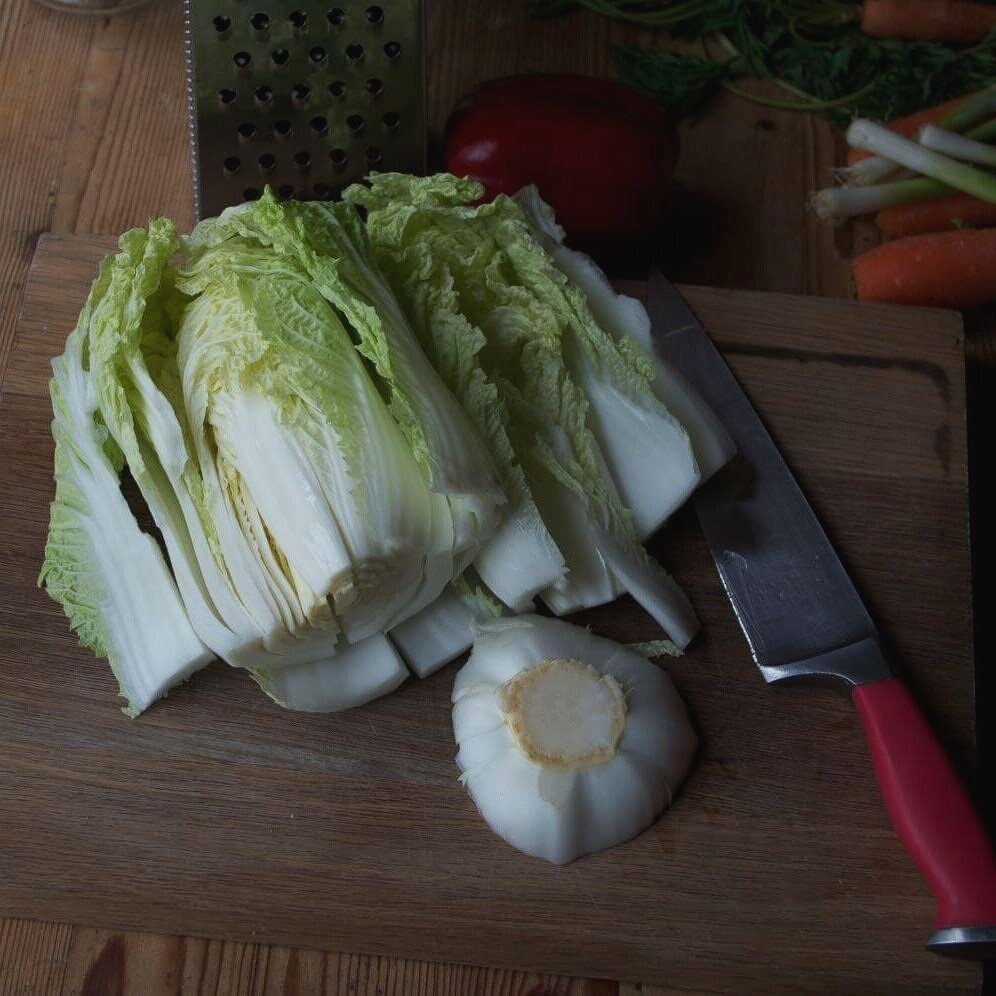

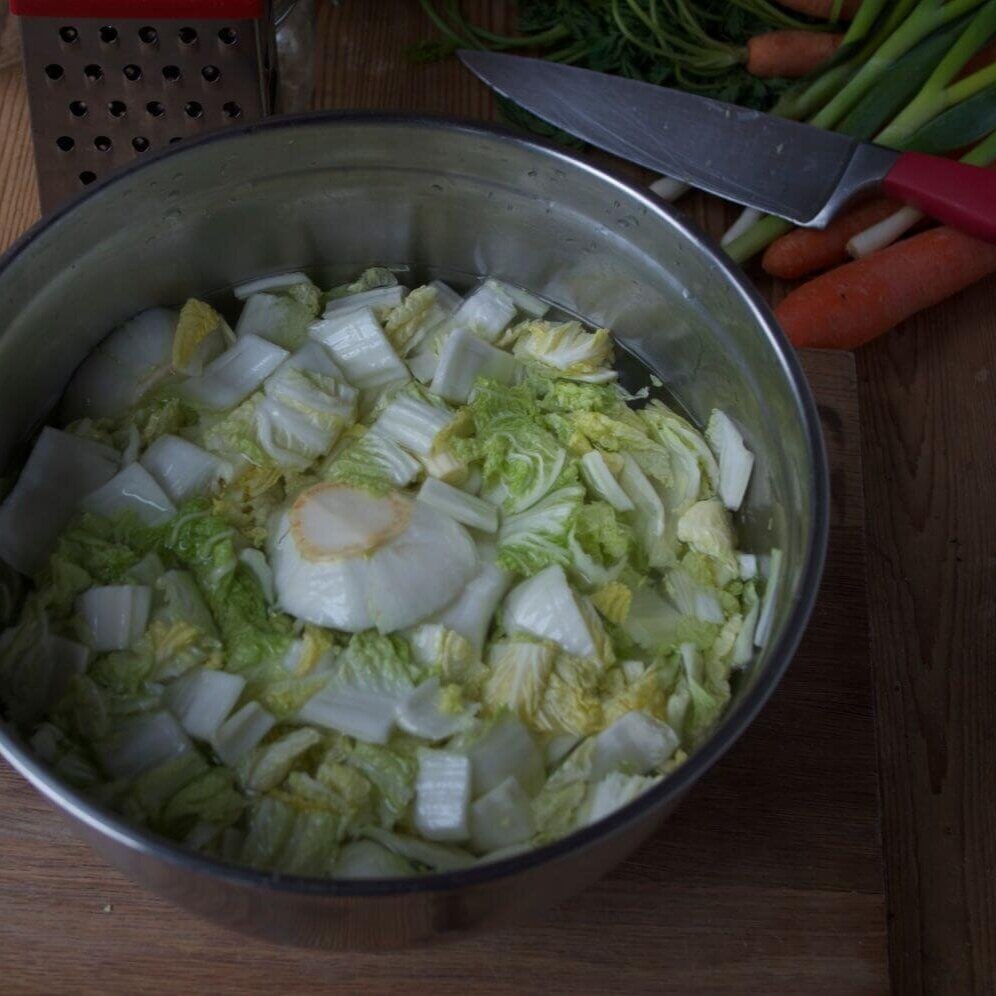
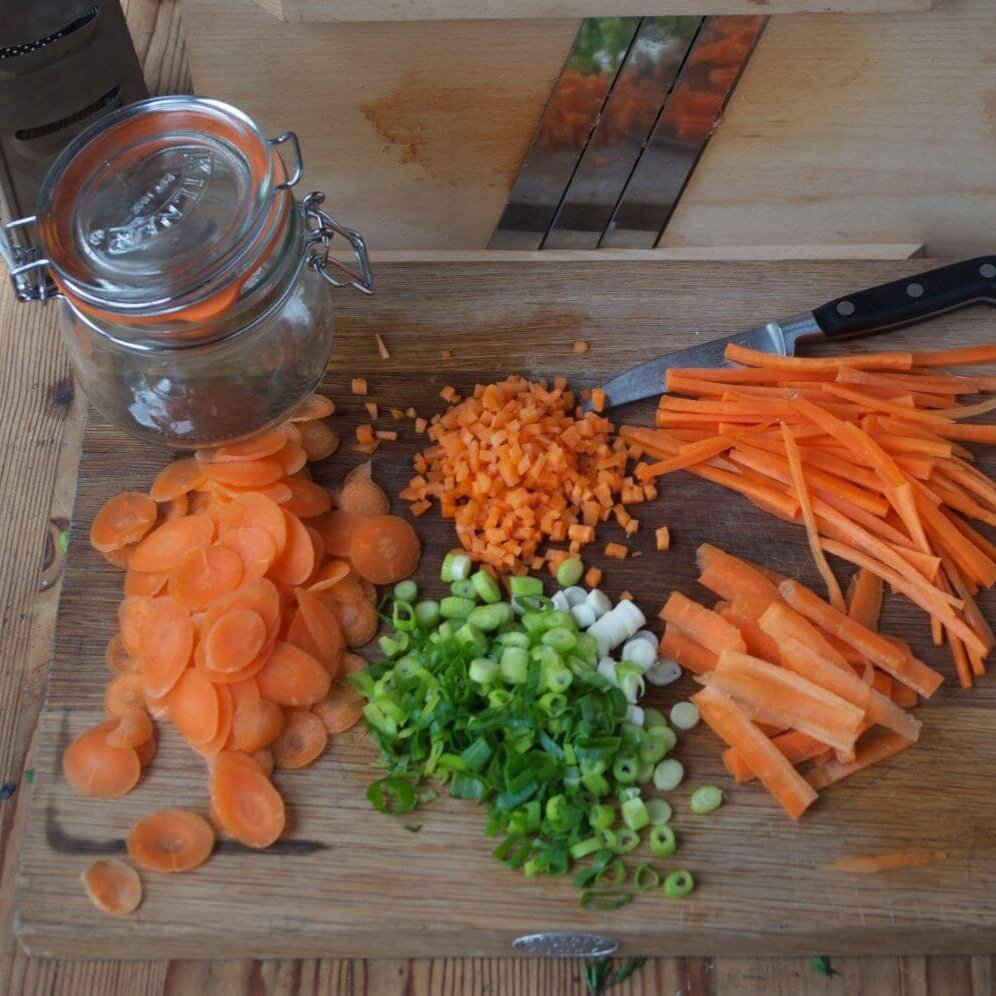
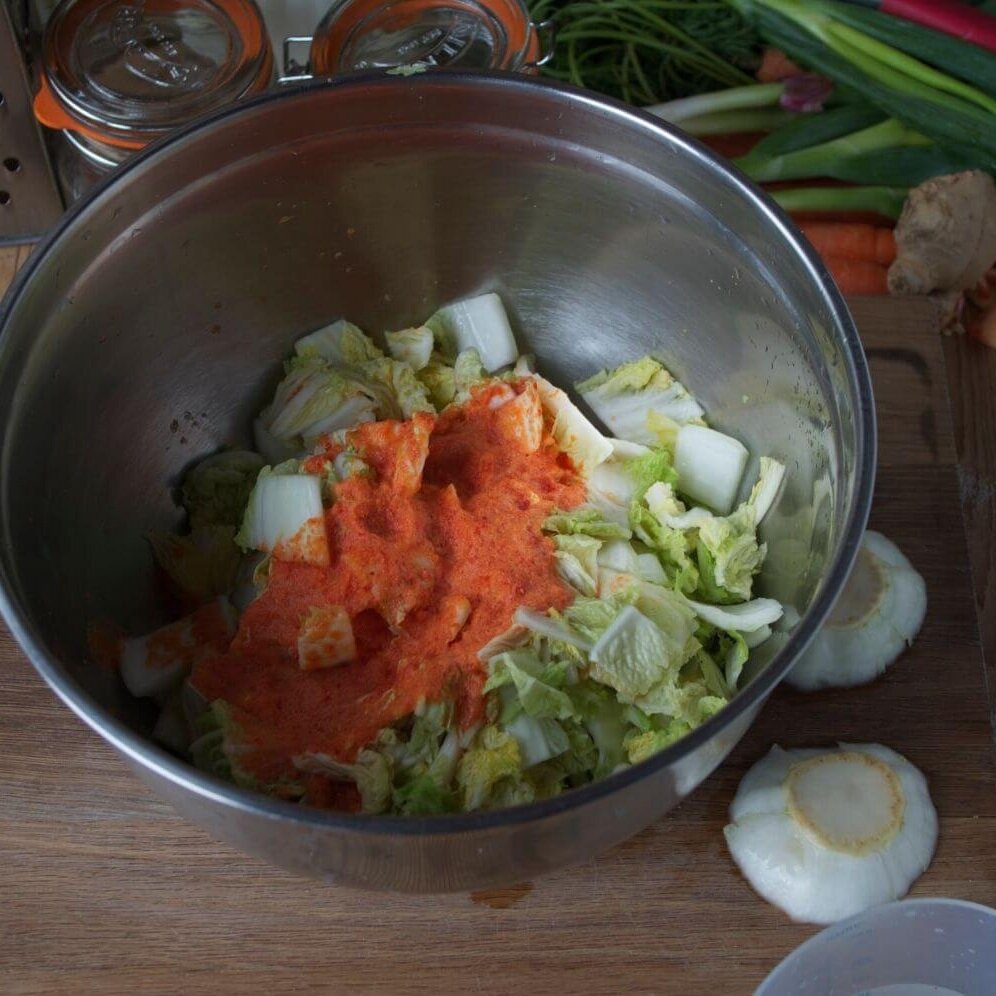
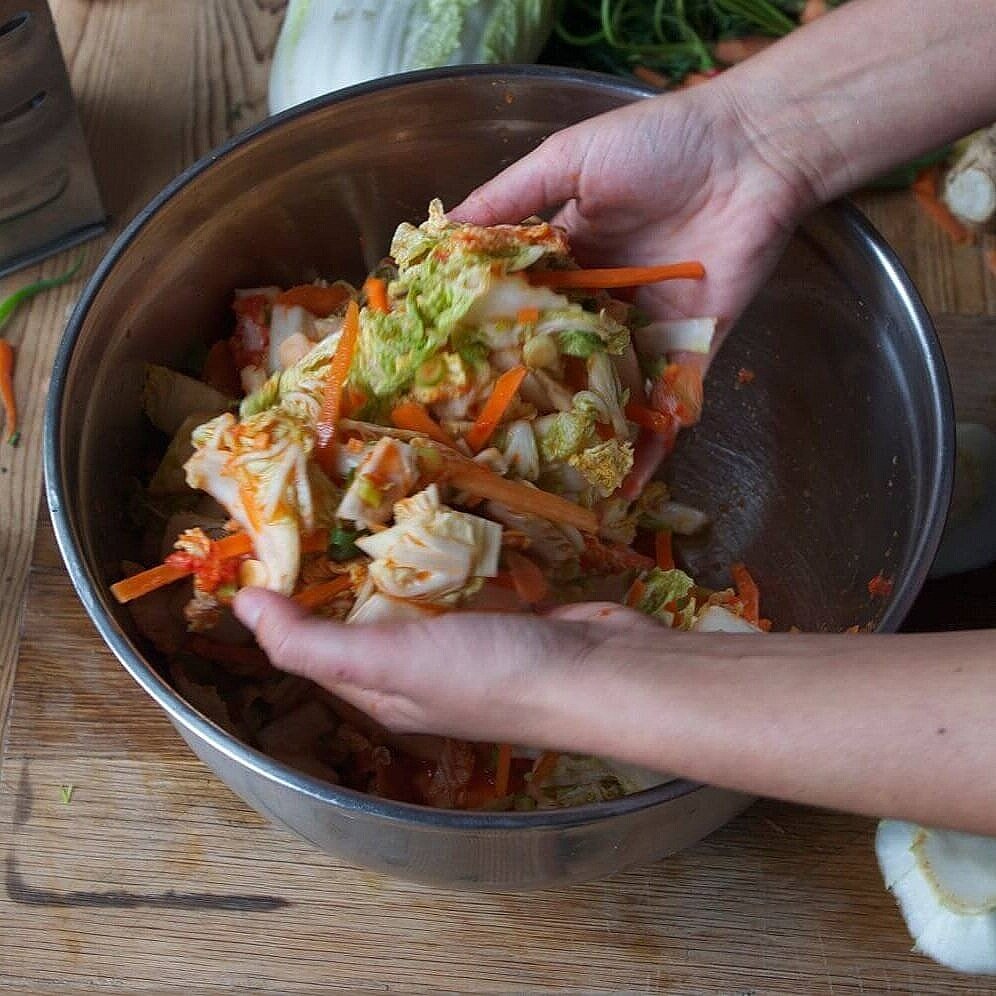
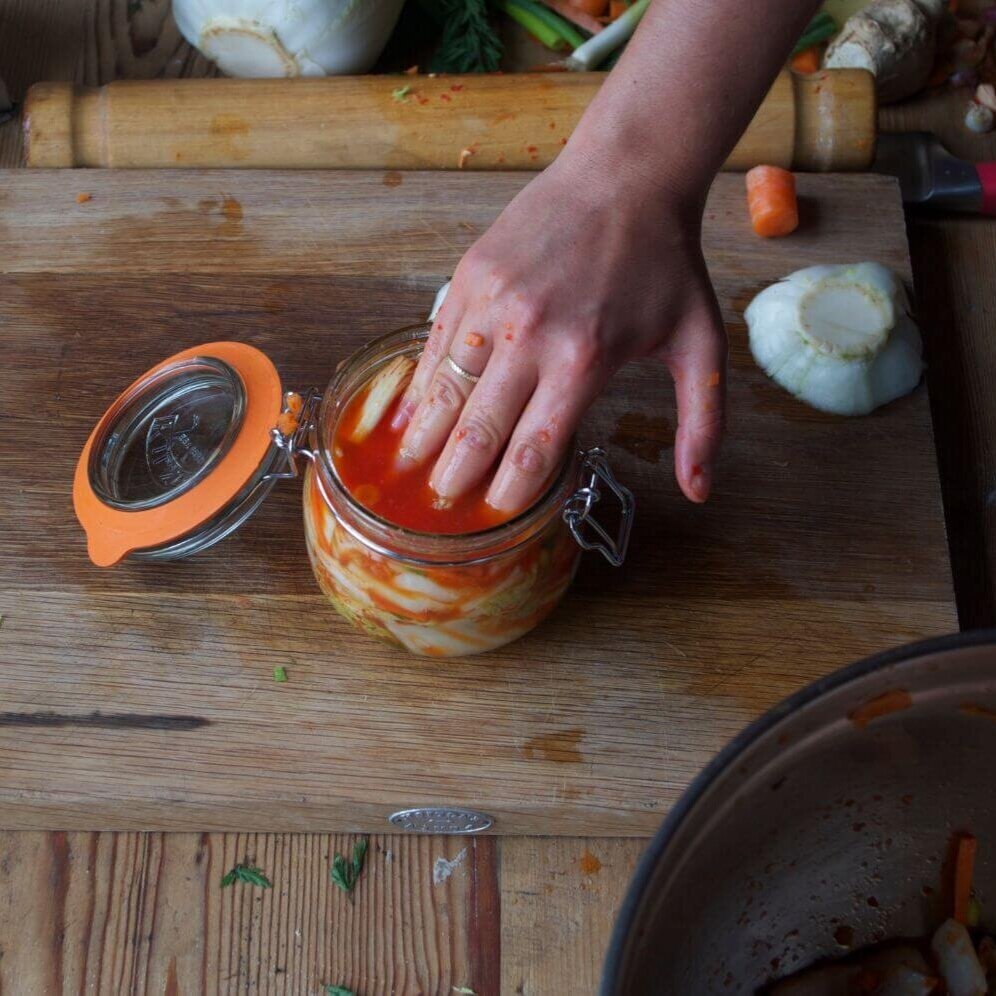
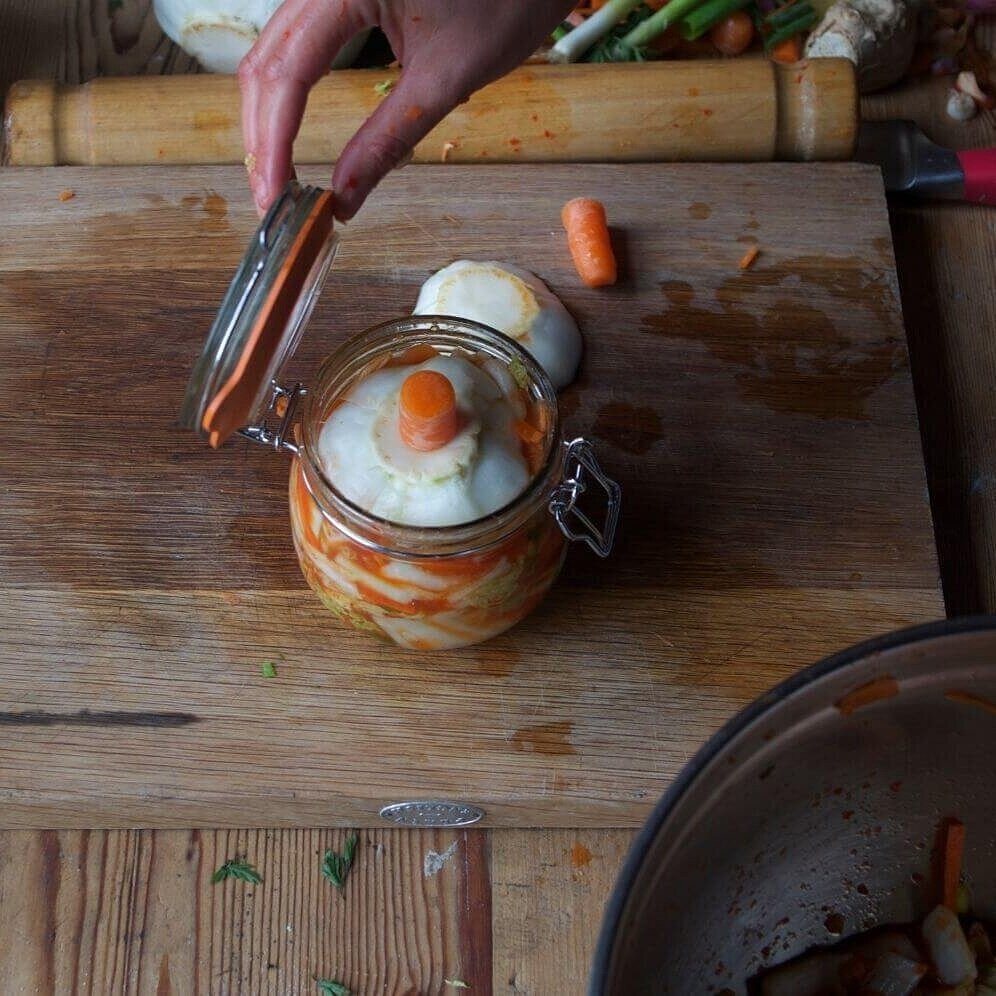
Kimchi, using kimchi paste from our shop.
(Start the night before and finish the following morning)
The pictures here show me making a traditional style Chinese leaves Kimchi – but you can use an ordinary savoy type cabbage or indeed any other mix of vegetables. Kimchi is a word like sourdough, it describes an approach to making a fermented dish rather than one specific recipe. So get experimenting and make your own unique Kimchi.
You will need
2 Chinese leaves, 4 or 5 carrots, a bunch of spring onions, and salt.
200g Kimchi paste from our shop - or make your own. See below for how to.
VARIATION - you can use ordinary savoy type cabbage and add other veg. Just keep it to roughly the same amount.
And:
A glass Kilner type jar at least 2 litres – or a number of smaller jars. (You can use large jam jars if you are stuck. If you do you will need to remember two important things. Don’t let the Kimchi come in contact with the metal lid and you will need to burp your jar daily so the gasses of fermentation (Carbon Dioxide) can escape your jar safely.) Jars must be very clean but you don’t need to sterilise them. Hot wash on a dishwasher or hot wash and use a clean drying up towel or leave to dry on drainer.
A large bowl. I use a washing up bowl.
A set of scales to weigh your salt. If you don’t have scales you can add salt to taste – saltier than you would normally make a dish but not unpalatable is a good guide.
Salt – preferably one without an anti-caking agent or added fluoride. Fine standard sea or rock salt is good. You don’t want a coarse rock salt as it won’t mix in well enough. We have it in our shop.
Method:
Start with preparing your cabbage the night before. Make 4 litres of a 5% brine. That’s 50g of salt for every 1ltr water – so 200g salt and 4 litres of water. Dissolve the salt in about half a litre of hot water and then add the remaining cold water.
Once the brine is cool, chop the cabbage and add to the brine. Cut the end of the cabbage off in one piece as shown and add this in too - you’ll need this end piece later as a stopper.
Cover and leave overnight.
Next morning drain the cabbage and throw away the brine. Put the cabbage back in the bowl ready to mix with the rest of the veg.
Cut up your carrots and spring onions. I like a range of different shapes and sizes – not too chunky.
Find the cabbage end and put it on one side.
Mix all the veg and the Kimchi paste together well.
Press into your jars leaving at least 4cms clear space at the top of the jar.
Make sure you really press each handful down well to exclude any air pockets. You may not have as much juices as in my pictures but you will need the juices to come up over the top of the veg when you press down with your fingers.
Take the cabbage end and also a small piece of carrot (or a chunky bit of cabbage heart if you’re using an ordinary cabbage) to act as a stopper on top of your Kimchi. This will keep the veg under the briney juices. This is the most important part of the process. Any veg poking out of the juices may go mouldy and spoil all your jar. Take time to adjust the stopper so it is pressing the veg under the juices, and then clip the jar shut. Closing the lid should push the stopper down further. Check you have no bits of veg floating out or above the juices.
Label your jar with date and ingredients and put it on a saucer. This is to catch any drips that might squeeze out as the Kimchi ferments.
Leave your jar/s on the side in your kitchen in a warmish place out of direct sunlight. If you have used jam jars with screw lids you will need to burp them every day. That means just loosen the lid to let the gasses out. You DO NOT need to burp your Kimchi if you have used a Kilner type jar as the gasses can escape safely through the rubber seal.
Leave for 5-12 days – or longer if you want more of the probiotic bacteria to develop, it’s a matter of taste. Some people like a more fermented taste and others a milder taste from less time fermenting.
Once you open your jar and start tasting, it needs to be kept in the fridge. Otherwise you can leave it unopened in a cool place for months.
HOW TO MAKE YOUR OWN KIMCHI PASTE
Take one large or two long red peppers, an apple (or half a teaspoon of sugar) about 5cms fresh root ginger, 5 fat cloves garlic and one heaped teaspoon of salt. Blitz in a food processor with a table spoon or two of water AND as much chilli as you like. You want a wet paste consistency. You can use fresh chillies or dried powder or buy the traditional Korean pepper powder online. This has a milder sweeter taste.
